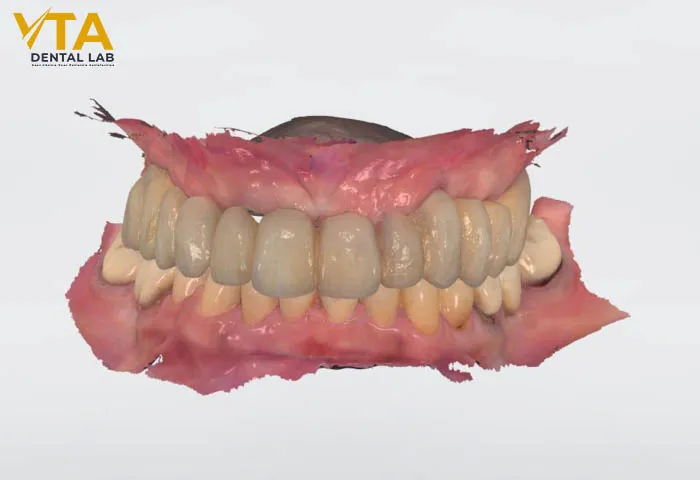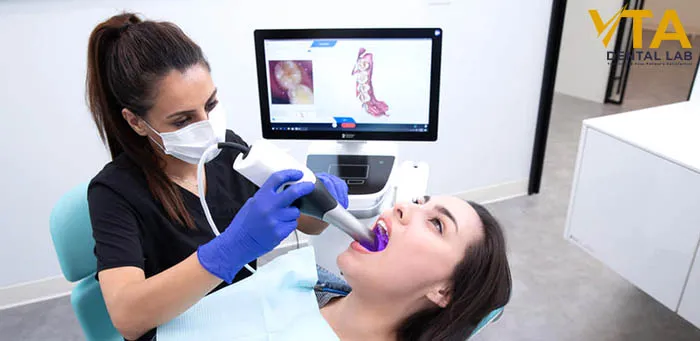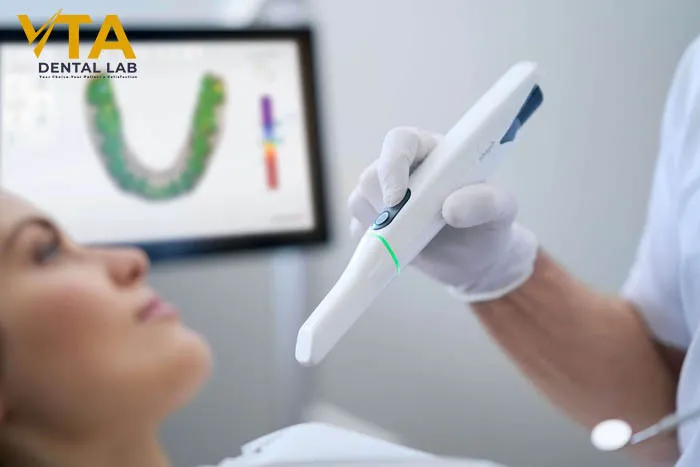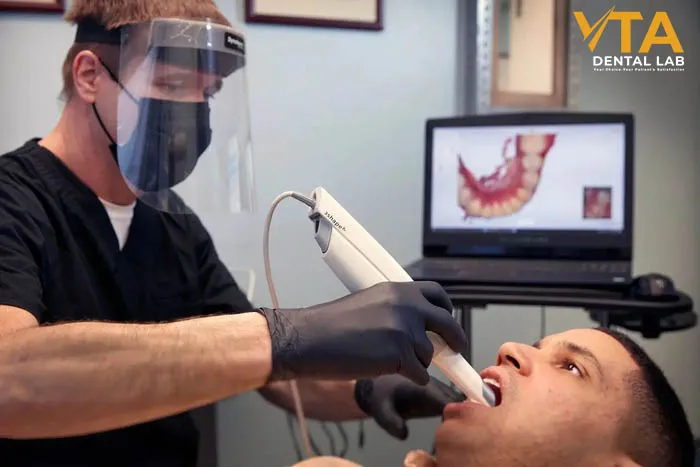Digital Impressions: Advantages and How They Work
Digital impressions are becoming an increasingly popular alternative to traditional impression methods in dental clinics worldwide. The results show that the process is faster, less invasive, and offers higher accuracy. This provides significant benefits for dentists, patients, and dental laboratories. So, what is digital impression technology? What are its benefits, and why haven’t all dentists adopted it yet?
What is a digital impression?
A digital impression is a 3D scan of the teeth taken using 3D scanning technology. The digital impressions system captures the patient’s dental arch using a cone beam, helping to create a highly accurate 3D image of the patient’s teeth. There are several ways to obtain a digital impression, but many dentists use an intraoral scanner to create a digital impression directly from the patient’s mouth.
The intraoral scan produces a digital replica of the teeth and gums, with the results displayed on a computer screen. Afterward, the dentist can use this dental impression to assess the patient’s oral health.

What are digital impressions used for?
Digital impressions are used to create digitized images, which serve as the starting point for designing dental restorations. They are used for simple treatments like placing single dental crowns, bridges, etc. Below are other cases where digital impressions can be used:
- Dental Treatment Planning: Digital impressions are used to design and fabricate products like crowns, bridges, veneers, and inlays/onlays. Additionally, they are used to accurately plan dental implant placements, ensuring the best results for patients.
- Dental Device Fabrication: Digital scans are used to create custom dental devices such as bite guards, protectors, and retainers. They are also used to create prosthetic products such as full or partial dentures, ensuring a perfect fit for the patient.
- Improving Dental Workflow Efficiency: Thanks to the ability to send digital data directly to the lab, digital impressions significantly reduce the time required to process dental products. Instead of waiting for days to receive traditional impressions, dental labs can streamline the process, enhancing efficiency.
- Record Keeping: Dentists can track changes in the patient’s oral structure over time, allowing for necessary adjustments in dental care.

How long does it take to take a digital impression?
Taking a digital impression typically takes 3 to 10 minutes, depending on the complexity of the case and the technology used. Factors that influence the time required include:
- Type of Case: Scanning for single-tooth restorations, such as crowns or fillings, typically takes just a few minutes. However, full arch scans for the upper or lower jaw may take 8 to 10 minutes.
- Technology of the Intraoral Scanner: Newer, more advanced scanners operate faster and deliver high-resolution images instantly. Older or less advanced models may take longer to complete the scan.
- Patient-Related Factors: Additional time may be needed for patients with complex dental anatomy or excessive saliva production to ensure accuracy.

Digital impressions vs. traditional impressions
When comparing digital impressions and traditional impressions, several factors need to be considered, including accuracy, patient comfort, time efficiency, and environmental impact.
| Criteria | Digital Impressions | Traditional Impressions |
| Accuracy | Provides highly accurate 3D images, minimizing errors from distortion or material shrinkage. | Prone to inaccuracies due to shrinkage, air bubbles, or improper handling of materials. |
| Patient Comfort | Eliminates the need for bulky trays or messy materials, offering greater comfort. | Often uncomfortable, especially for patients prone to gag reflexes or sensitivity. |
| Time Efficiency | Quick scanning process, typically completed within a few minutes. | Time-consuming due to material setting, transportation, and potential remakes. |
| Environmental Impact | Eco-friendly, reducing waste by eliminating single-use materials like trays and putty. | Generates significant waste from disposable trays and impression materials. |
| Cost | Higher initial investment but cost-effective in the long run by reducing material expenses and remakes. | Lower upfront costs but more expensive over time due to material, shipping, and remake expenses. |
| Applications | Ideal for complex cases like crowns, bridges, implants, and clear aligners. | Suitable for simpler cases or practices without access to digital technology. |
While both methods have their uses, digital impressions offer significant advantages in accuracy, comfort, efficiency, and environmental sustainability, making them the preferred choice in modern dentistry. However, traditional impressions remain valuable in specific situations and for practices without digital equipment.
Taking digital impressions in different fields of dentistry
Digital impressions in orthodontics
Dentists use digital impressions to create a 3D model of the teeth’ position, which they use to plan appropriate treatment and correctly place orthodontic appliances. The dentist scans the patient directly or digitizes a plaster model using a tabletop scanner.
Once the digital model is created, the orthodontist can open it in specialized orthodontic planning software to determine the most accurate and functional placement for braces, clear aligners, or other retainers to achieve the desired results.

Digital impressions for dentures
Digital impressions create detailed scans of the gums and remaining teeth, helping to design full or partial dentures. They offer several benefits, such as ensuring a better, more accurate fit, reducing restoration time, and producing more aesthetically pleasing results.
Digital implant impressions
Digital impressions capture detailed images of the oral structure to create a 3D model, assisting in planning implants and designing custom abutments or crowns. This provides precise parameters for implant placements, saves time by reducing the number of follow-up visits, and increases patient comfort.
Take away
In today’s dental industry, digital impressions are revolutionizing the way impressions are taken, offering greater precision, efficiency, and patient comfort. This advanced technology streamlines workflows and enhances the accuracy of restorations, making it a valuable asset for modern dental practices.
At VTA Dental Lab, we support both traditional impressions and cutting-edge digital techniques, ensuring high-quality results for every case. Whether you rely on conventional methods or embrace digital innovation, our expertise and commitment to excellence help you achieve seamless, precise restorations. Partner with us to elevate your practice with the best in impression technology.